An introduction to Tamiya Paint Retarder
A discussion on using Tamiya Paint Retarder for Lacquer Paints 87198 and Paint Retarder for Acrylic Paints 87114.
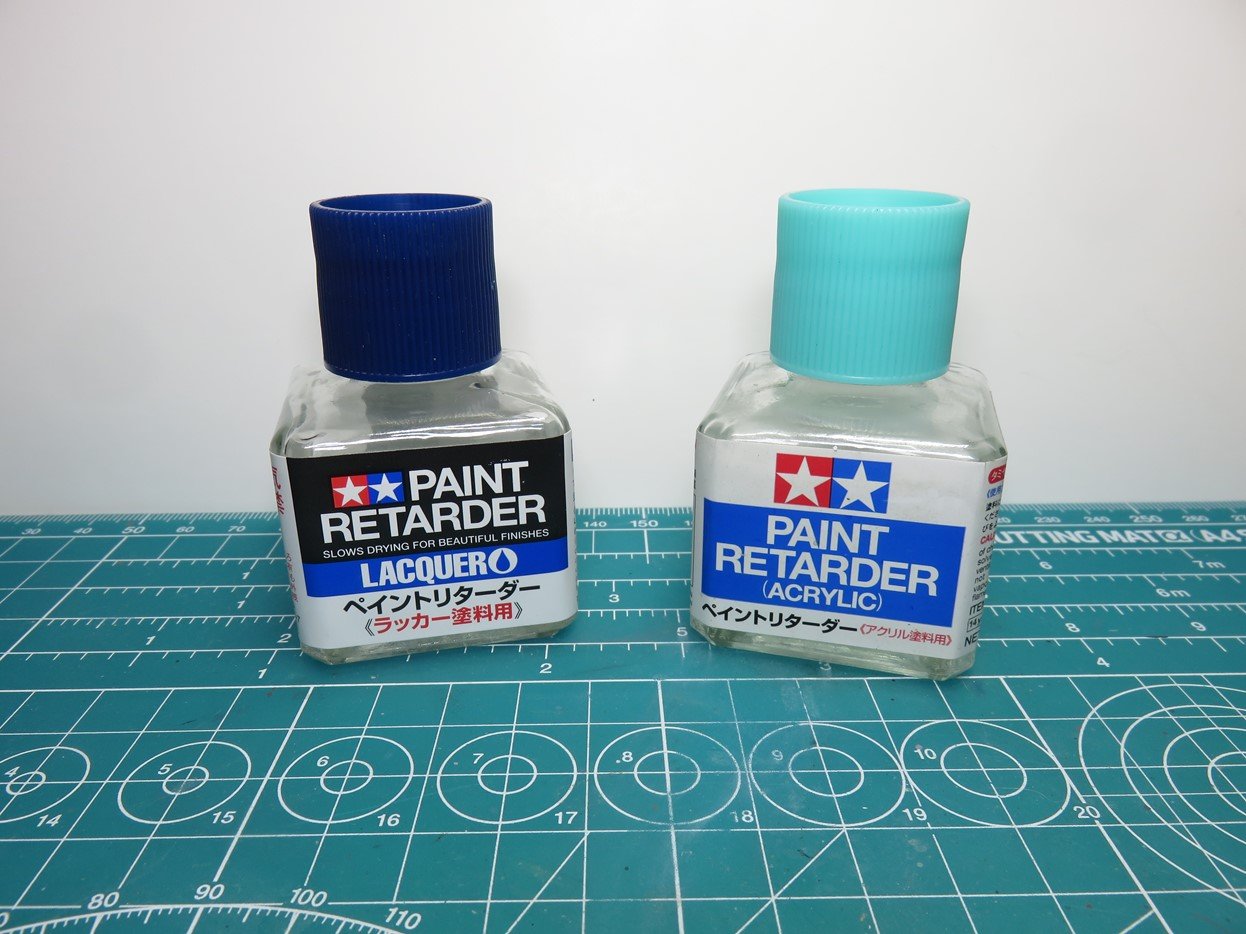
You might have come across these products while you are browsing online or when you are in the hobby store. You might wonder what these are for, or you might already know, and you might think that you don’t need them, but let me demonstrate how well these products work and I think you will be adding these to your shopping cart.
So what is Retarder and how does it help my painting? Well, it’s actually pretty simple, the retarder is added to paints and this slows down the paints drying time. This will help the paint to level down to the surface slower allowing a more flat and beautiful finish. And in the case of hand brushing it can eliminate brush marks.
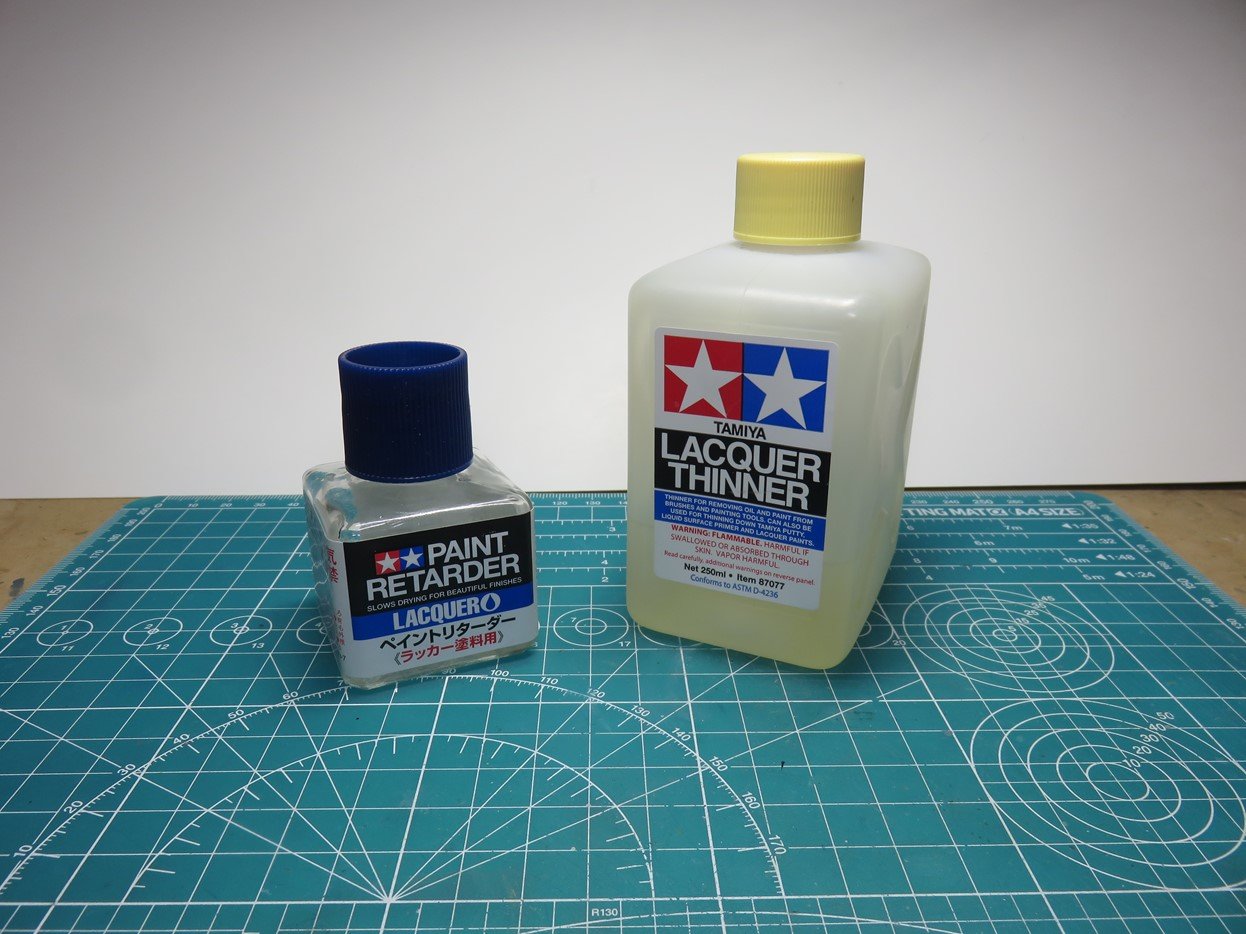
First, let’s focus on the Tamiya Lacquer Paint Retarder. Tamiya has had Lacquer paints for a while now in the AS Spray Cans and TS Spray Cans. A few years ago Tamiya introduced the LP Lacquer paint range in the smaller jars just like their Acrylic paints. With this, they also brought out this new retarder.
Lacquer based paints dry very quickly, but they are preferred by many modelers because this allows them to work on a project faster. They are also a very hard paint compared to enamels and acrylics and will really bite into the plastic. Lacquers are especially used with car and motorcycle modelers as they can be polished out to a realistic glossy finish.
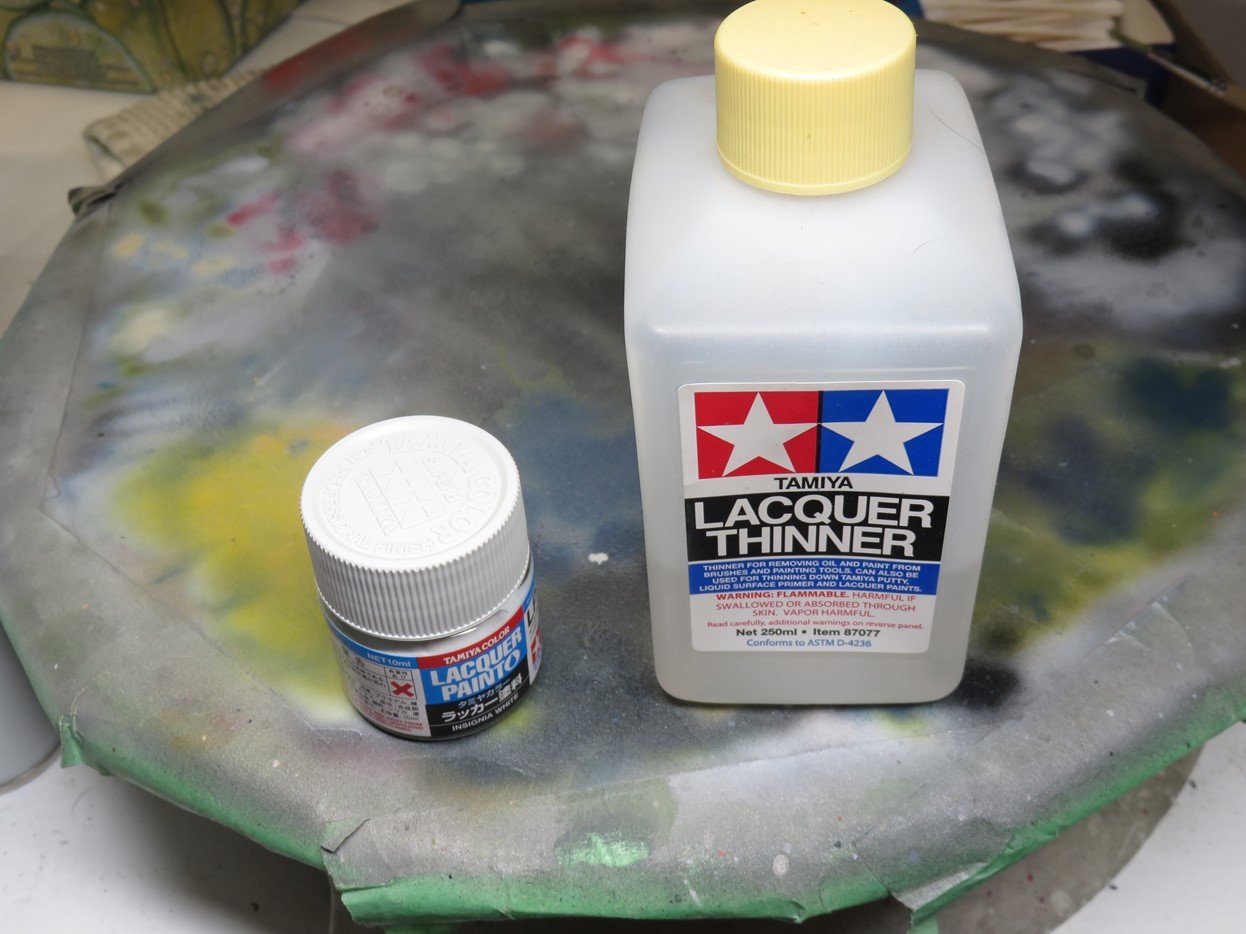
This retarder is designed to be mixed with Tamiya Lacquer Thinner, at a 10-1 ratio (10 Parts Paint – 1 Part Retarder). From my own experience, I mix the paint and lacquer thinner together, and then I estimate how much of the retarder to add. I was never totally exact with this mixture, but if I filled the paint cup in my airbrush I knew to add 4 drops.
Here at my airbrushing station, I’ve got a bottle of Tamiya LP-35 Insignia White. I’m going to mix it (50-50) with some Lacquer Thinner.
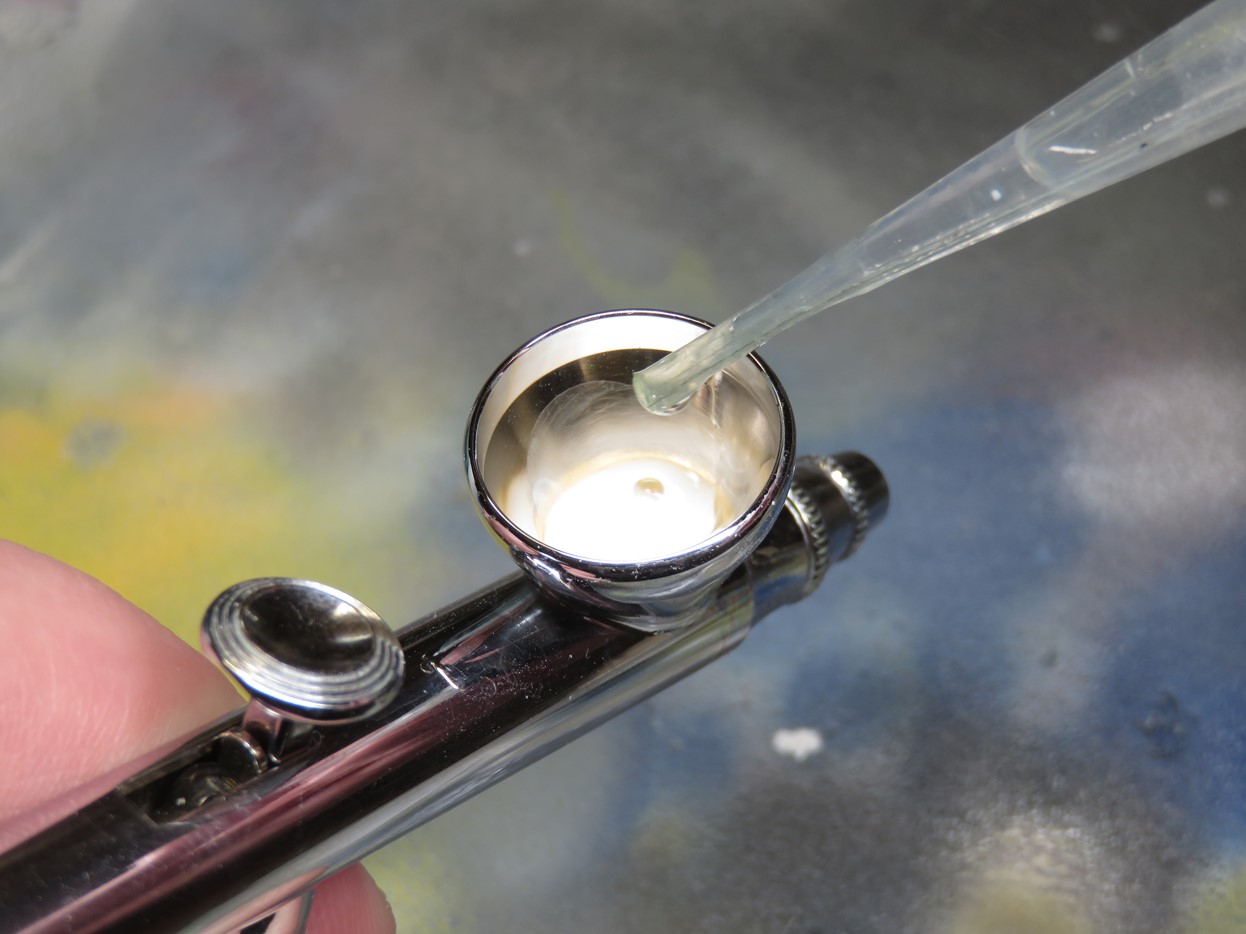
Now that the paint has properly been mixed with the thinner I’ve added 2 drops of the retarder to the paint.
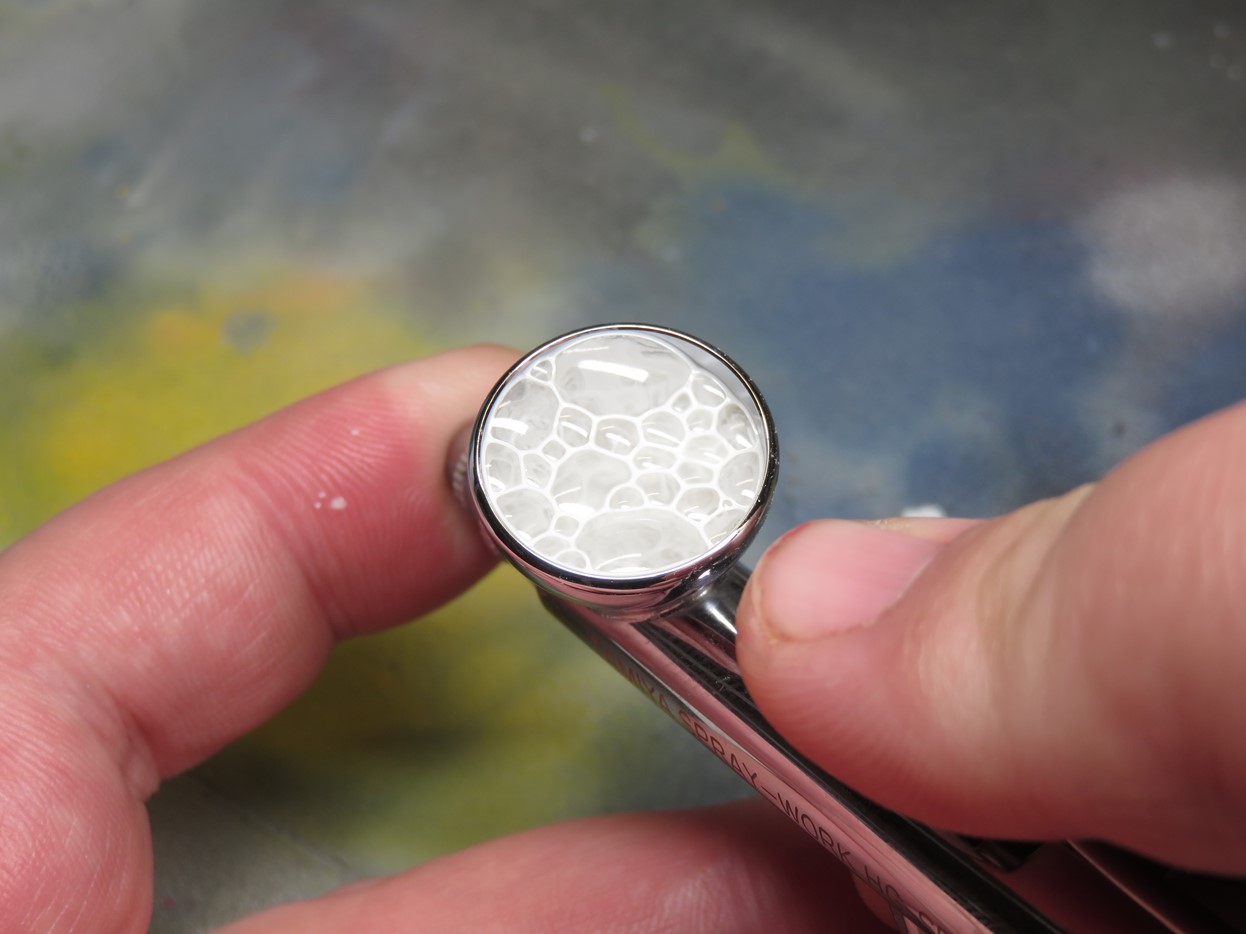
I’ve found the easiest way to mix these together is to put my finger at the front of the airbrush and very gently push some air out. Plugging up the front of the airbrush will cause the air to go backward, in what is generally known as “blowback”. Doing this for a few seconds (and that will depend on how much paint you are using) will usually mix everything together and will be ready for painting.
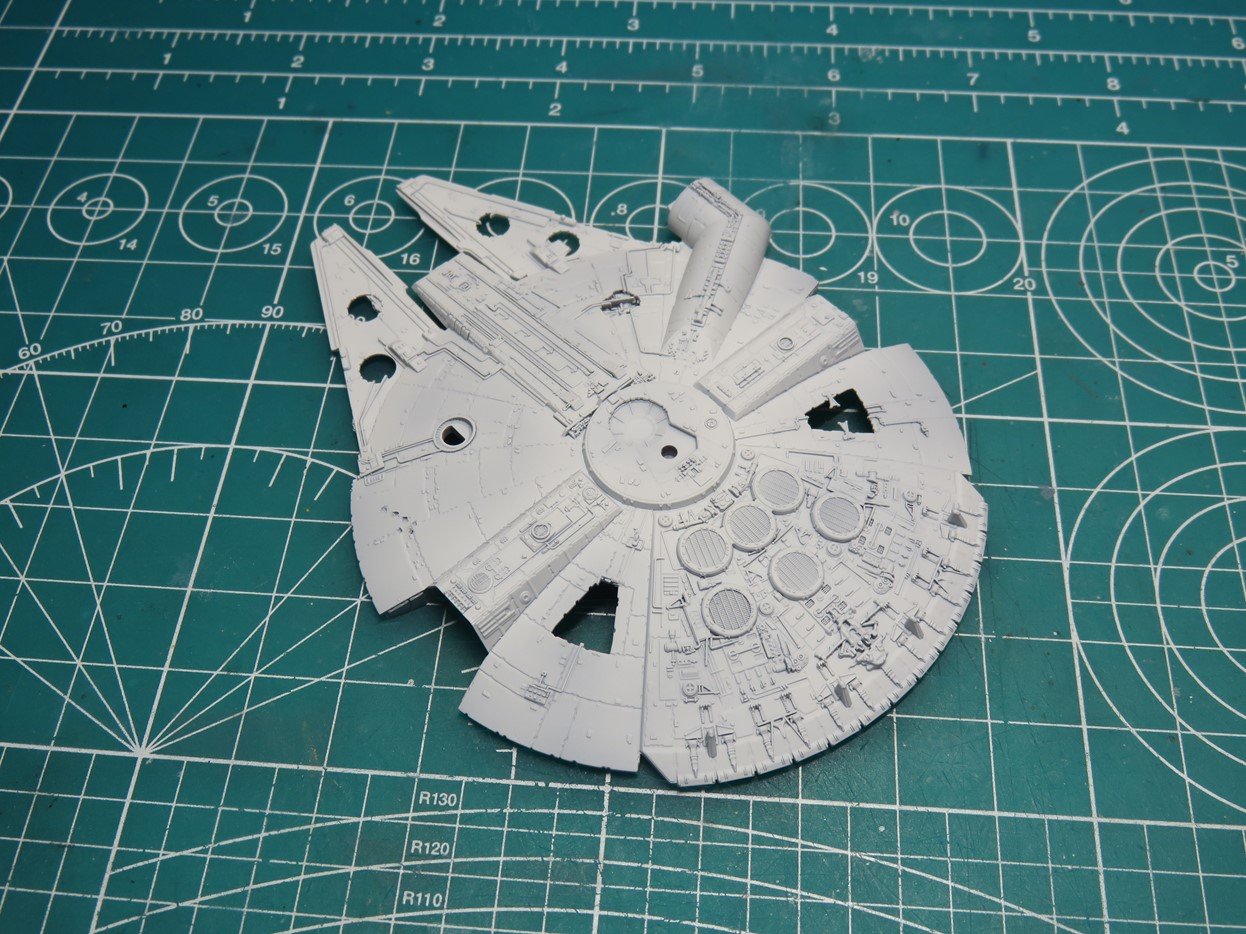
If you have properly thinned the lacquer paint it should feel as if you are using acrylics. The paint will be a lot softer and easier to lay down. As you can see here, the paint had beautifully leveled into all of the complicated surface details and is ready for further painting.
For times when I wanted to paint a mottled or splotchy finish I would usually add a few more drops of retarder because I was going to be painting tiny details and I wanted the paint to flow smoother.
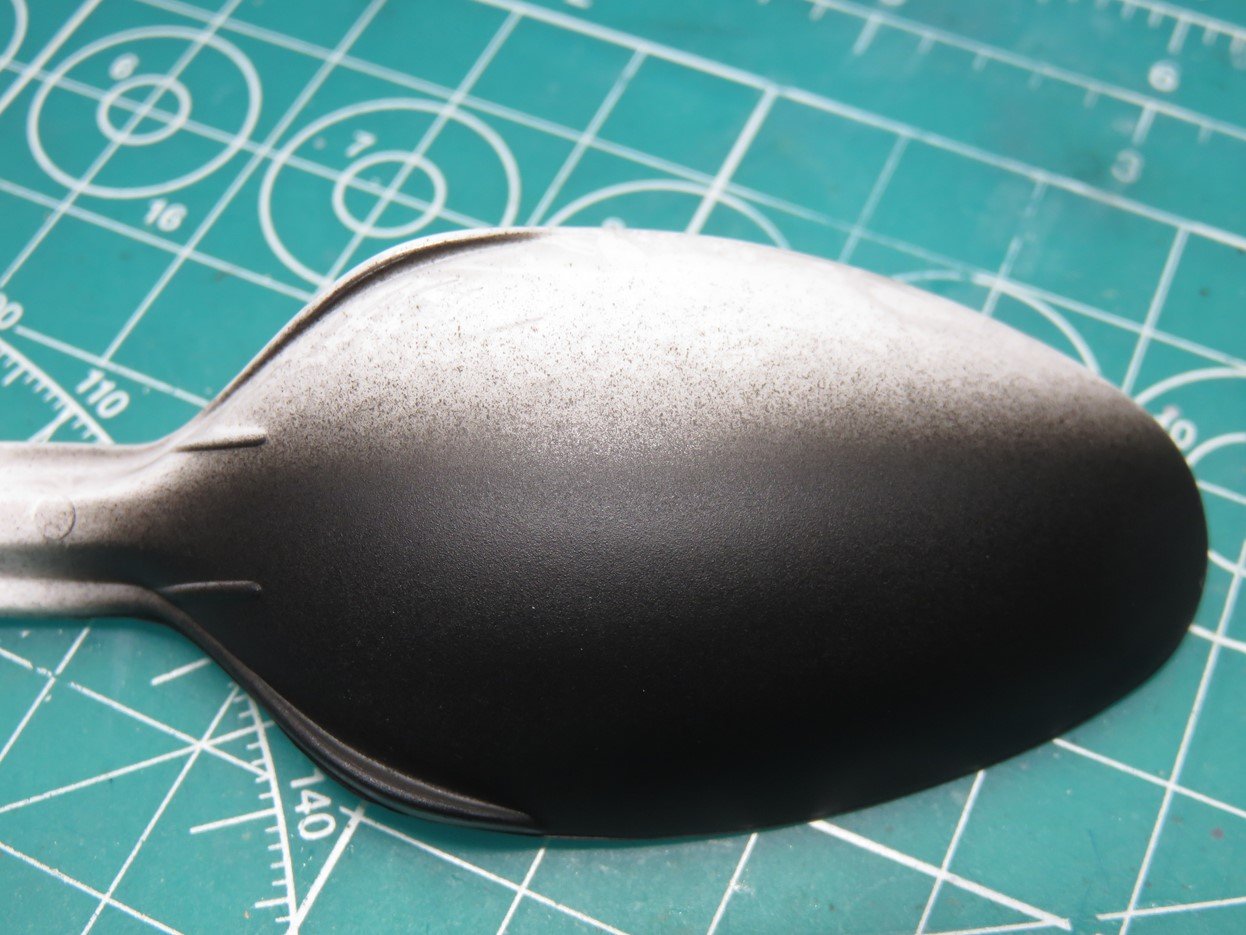
Here is a painting sample I did to show the differences between adding and not adding retarder to paint. I’ve used Mr. Color, Mr. Finishing Surfacer 1500 Black. When mixed properly this is an incredibly smooth primer and it has a beautiful sheen.
In this sample I didn’t add any retarder, just thinned it with some lacquer thinner. You can see that the texture of the paint is a bit coarse, and this would need to be sanded down and polished.
Also, look at the over-spray at the top, the specks are very thick and it almost looks like stubble.
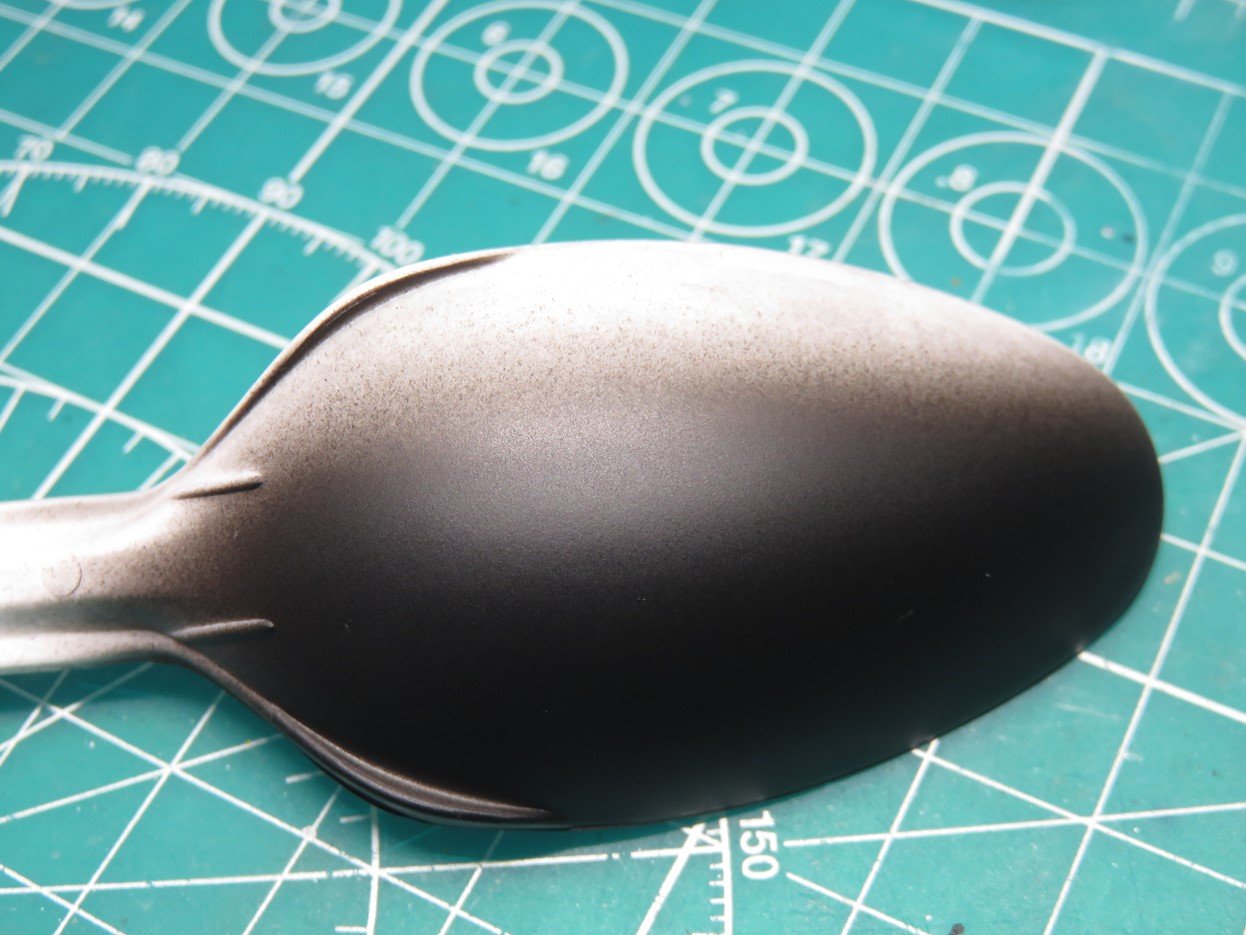
And here is a sample with the retarder added. Because this had a slower drying time the paint was allowed to level out more and is now very smooth. Also again look at the overspray, and notice that it’s a lot finer and not as thick and dark as the previous sample.
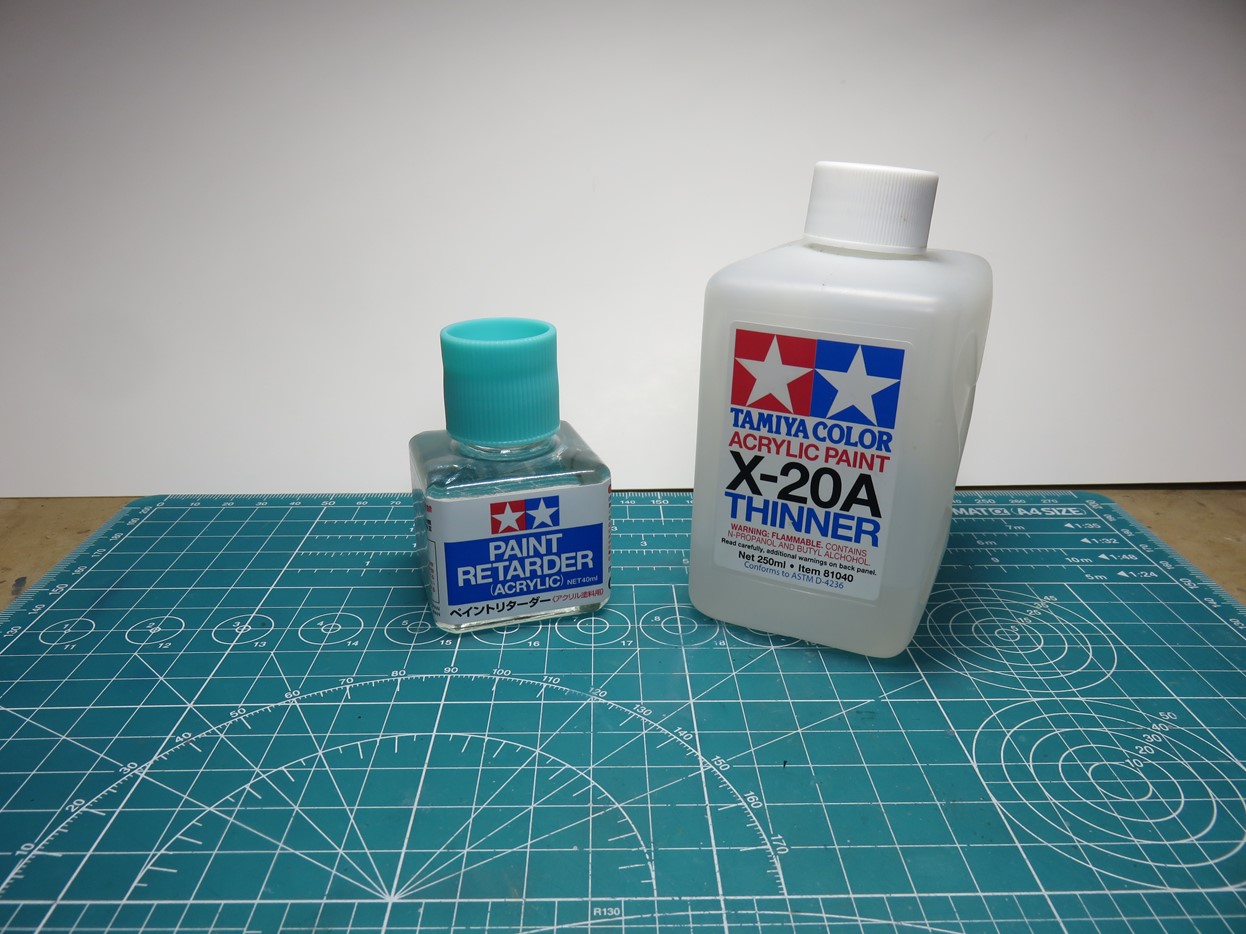
Now that the model has been painted I’m going to use the Acrylic Retarder to paint on some of the smaller panel details. As before with the lacquer retarder the mix ratio is 10-1 (10 Paint – 1 Retarder)
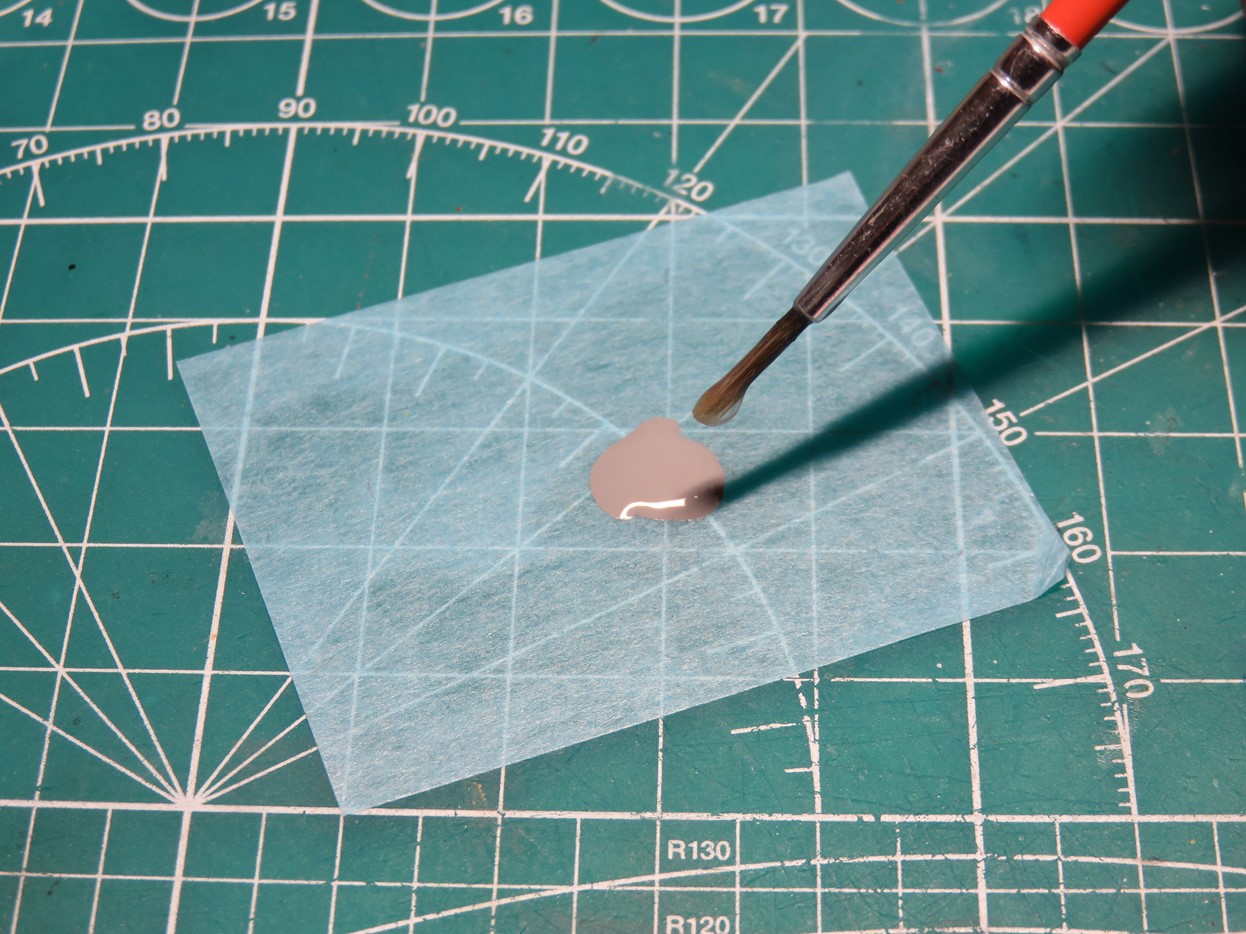
Typically when I’m hand painting I lay down a piece of tape as a pallet. I prefer to work in smaller batches, this makes it easier to thin down. Here I’ve added 2 drops of Tamiya XF-19 Sky Grey. I then took a clean brush and dipped it into the Acrylic Retarder. I’m not going to need a lot for this small batch.
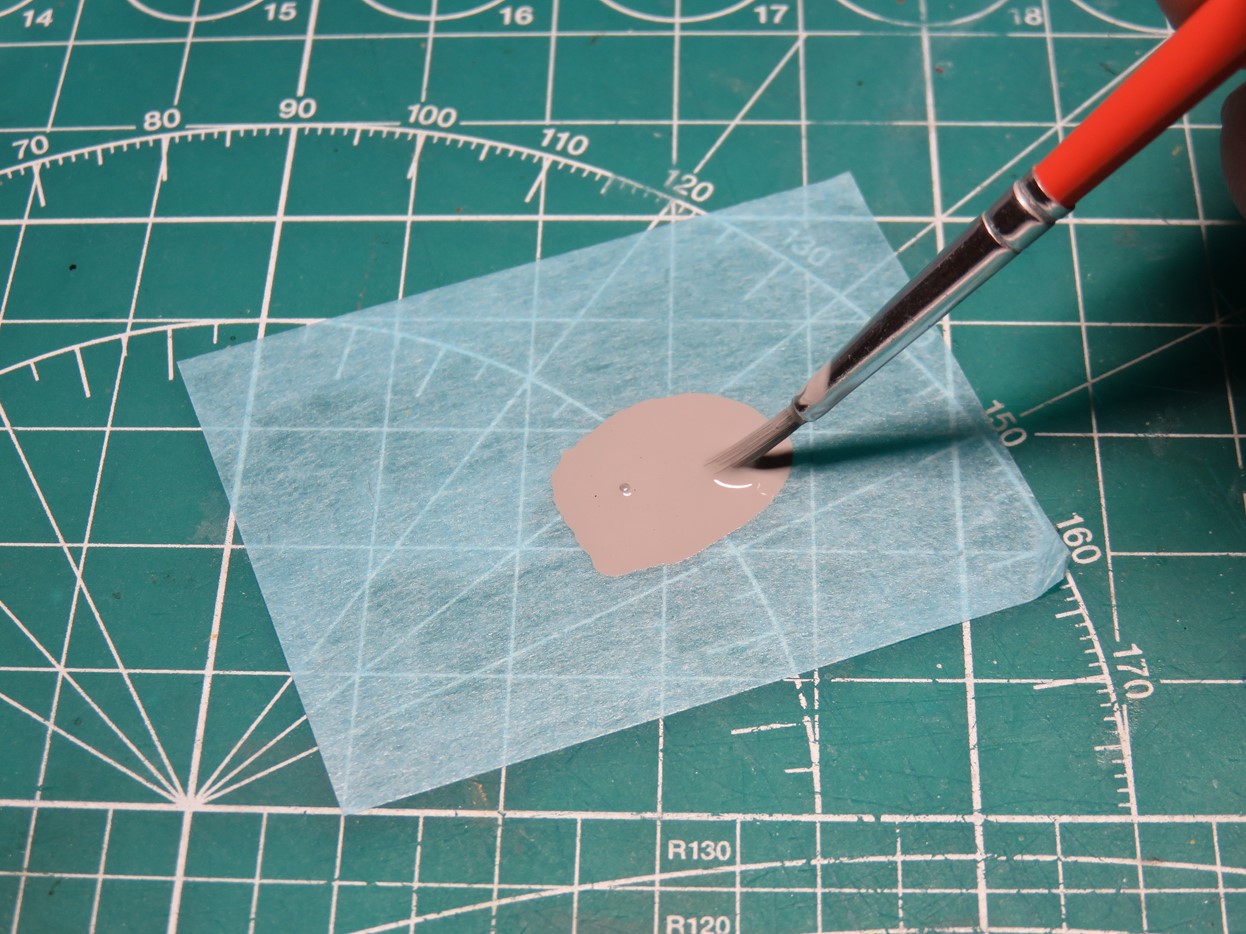
With the brush, I mix it all together. As you can see the retarder is already working and the paint is thinner and ready to be used. The paint at this stage feels like properly thinned Vallejo Acrylics, it’s a lot easier to use now.
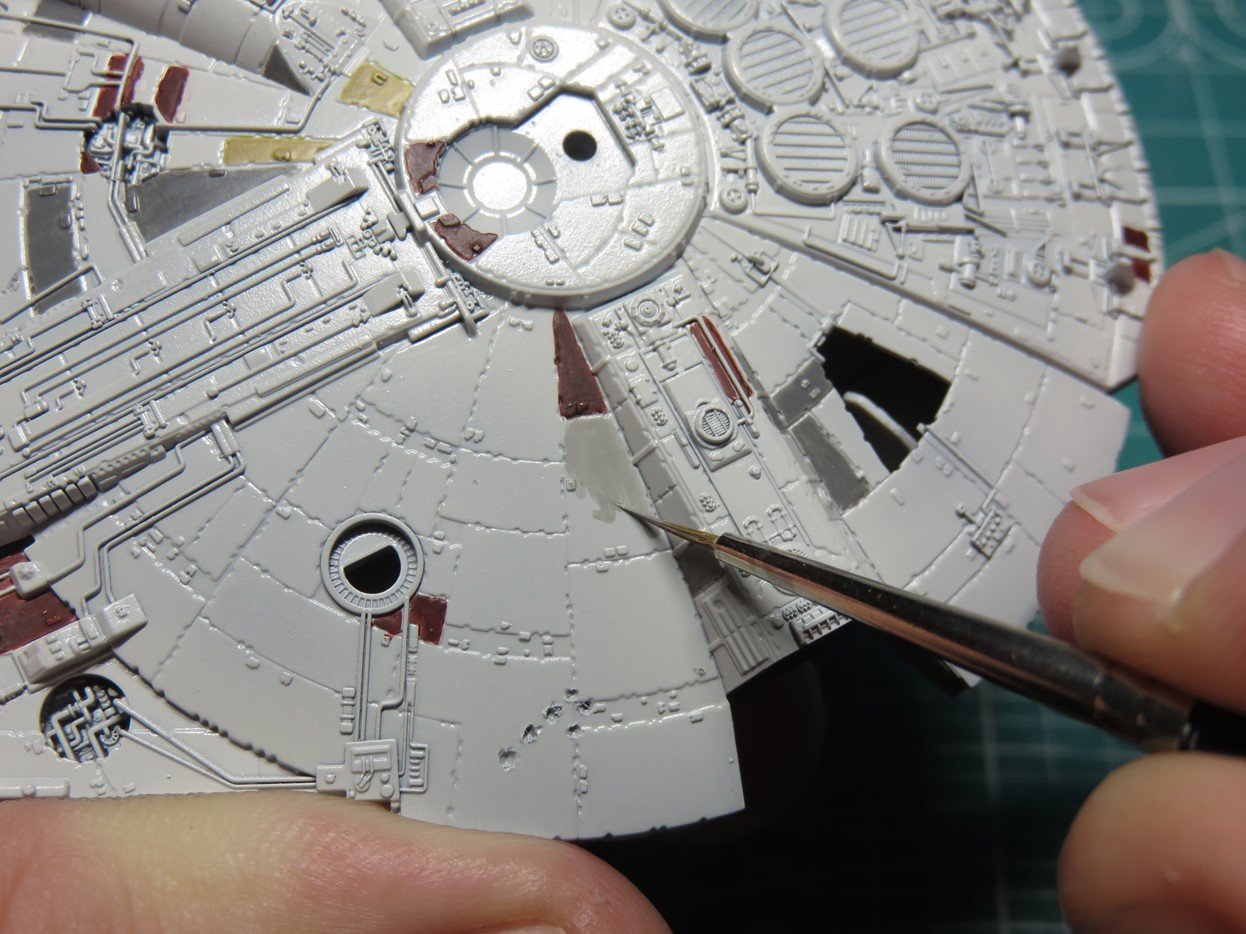
It will depend on the paint you are using, but I’ve found that I will need to apply 2-3 layers to build up a solid color. This is similar to when I am airbrushing. With the retarder added most of the brush strokes have been leveled out, and the finish is as smooth as the airbrushed parts.
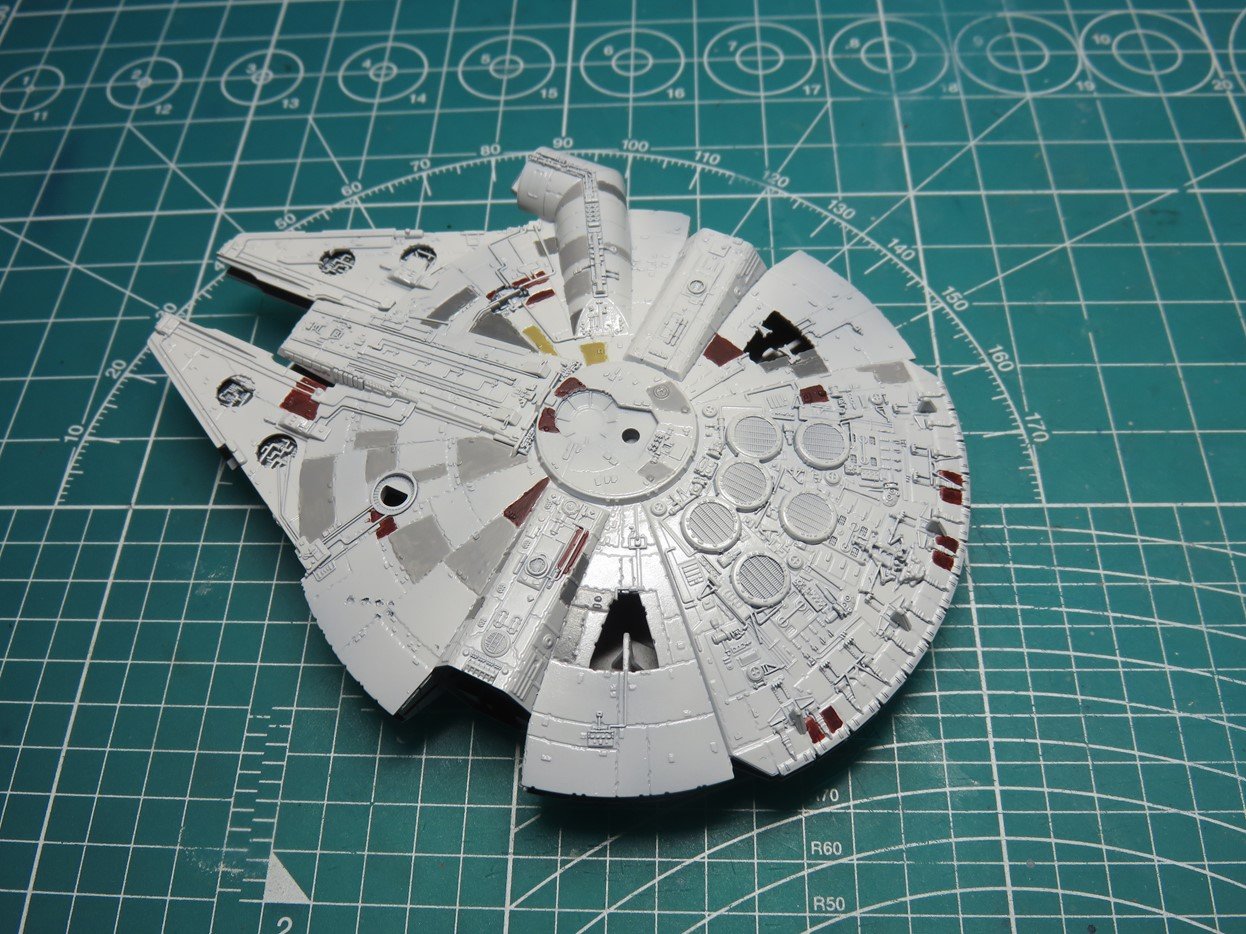
All of the different colored sections were hand painted using the Acrylic Retarder. Now, I’m not the best at hand brushing, but now that I’ve got some of this Retarder I can practice more. This is going to make things a lot easier for me in the future when I can’t mask and airbrush some tiny or difficult parts.
I’ve had many modelers over the years ask me how to brush paint Tamiya Acrylics, and I know what they mean, Tamiya Acrylics dry out pretty fast and leave brush strokes. but adding some retarder to the paint really makes a difference, you are going to have to try these out and see the results for yourself.
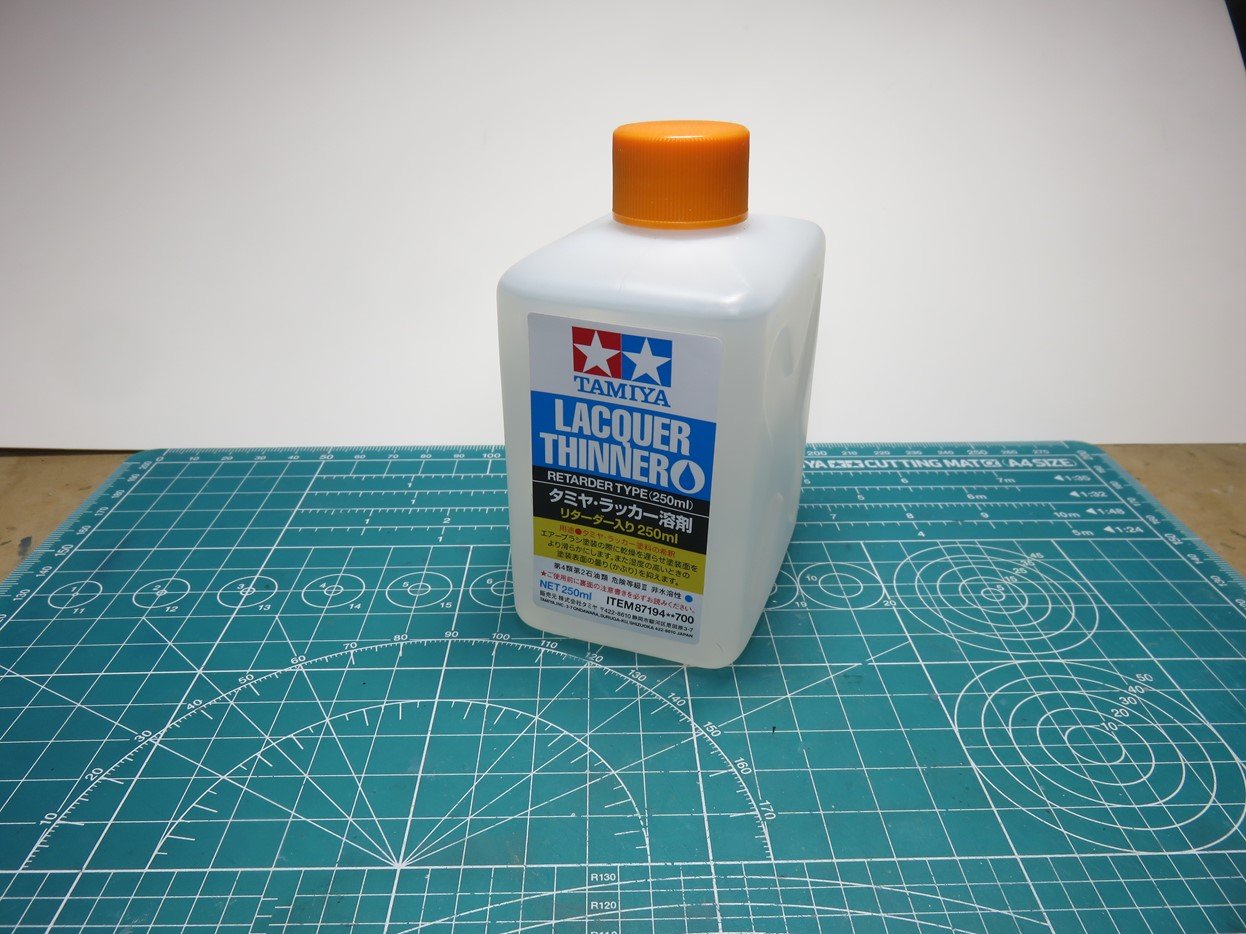
I’d also like to mention Tamiya Lacquer Thinner with Retarder (the orange cap) This has both of the products mixed together so you don’t need to add Lacquer Retarder. This product saves a lot of time trying to get the mixture right. And as a bonus, this will work when you are airbrushing Tamiya Acrylics.
That being said, when you are hand brushing Tamiya acrylics, I’d stick with the Acrylic Retarder. It’s formulated for those types of paints and is not aggressive as this Lacquer Thinner can be.
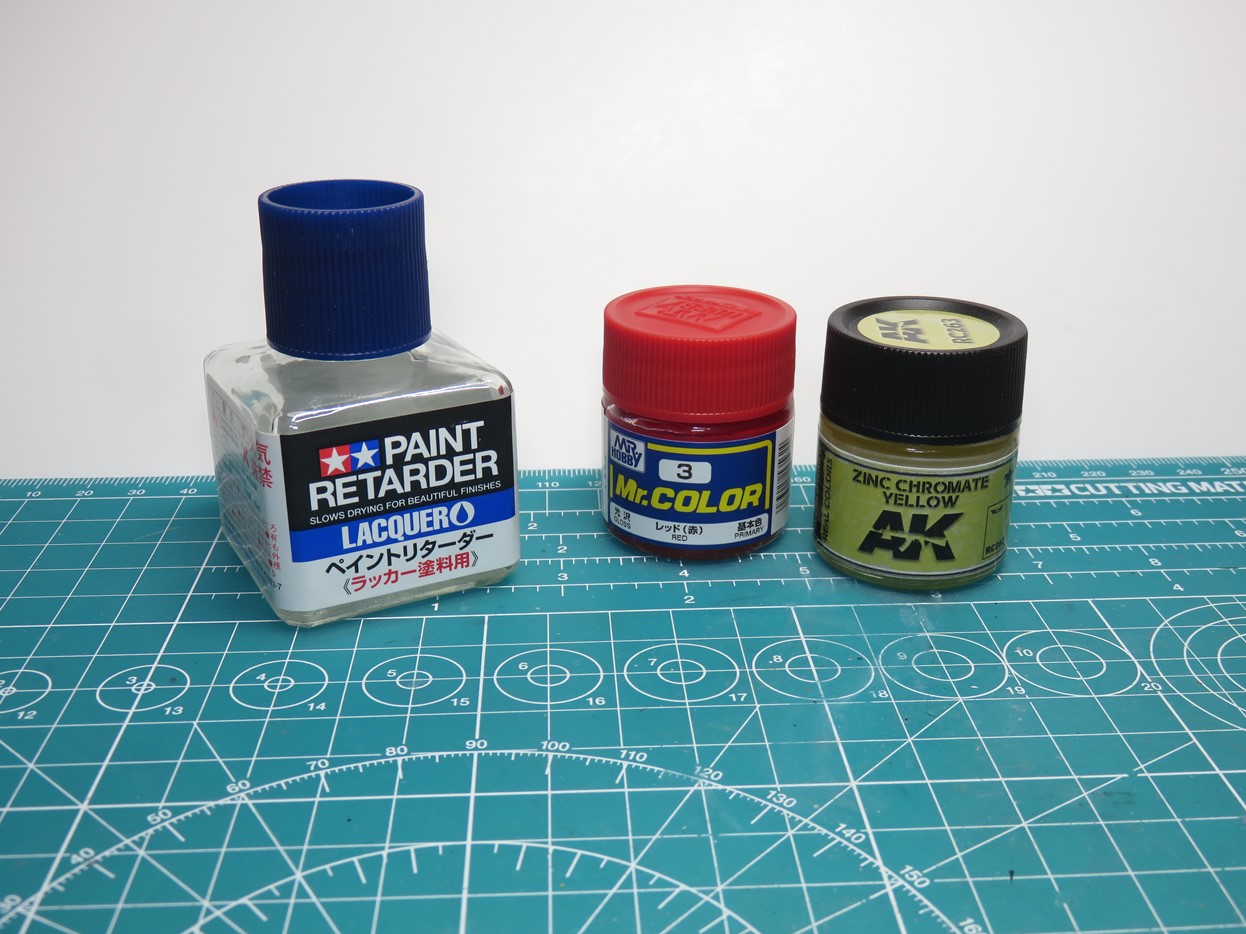
The Lacquer Retarder is also compatible with Mr. Color and AK Interactive lacquer paints.
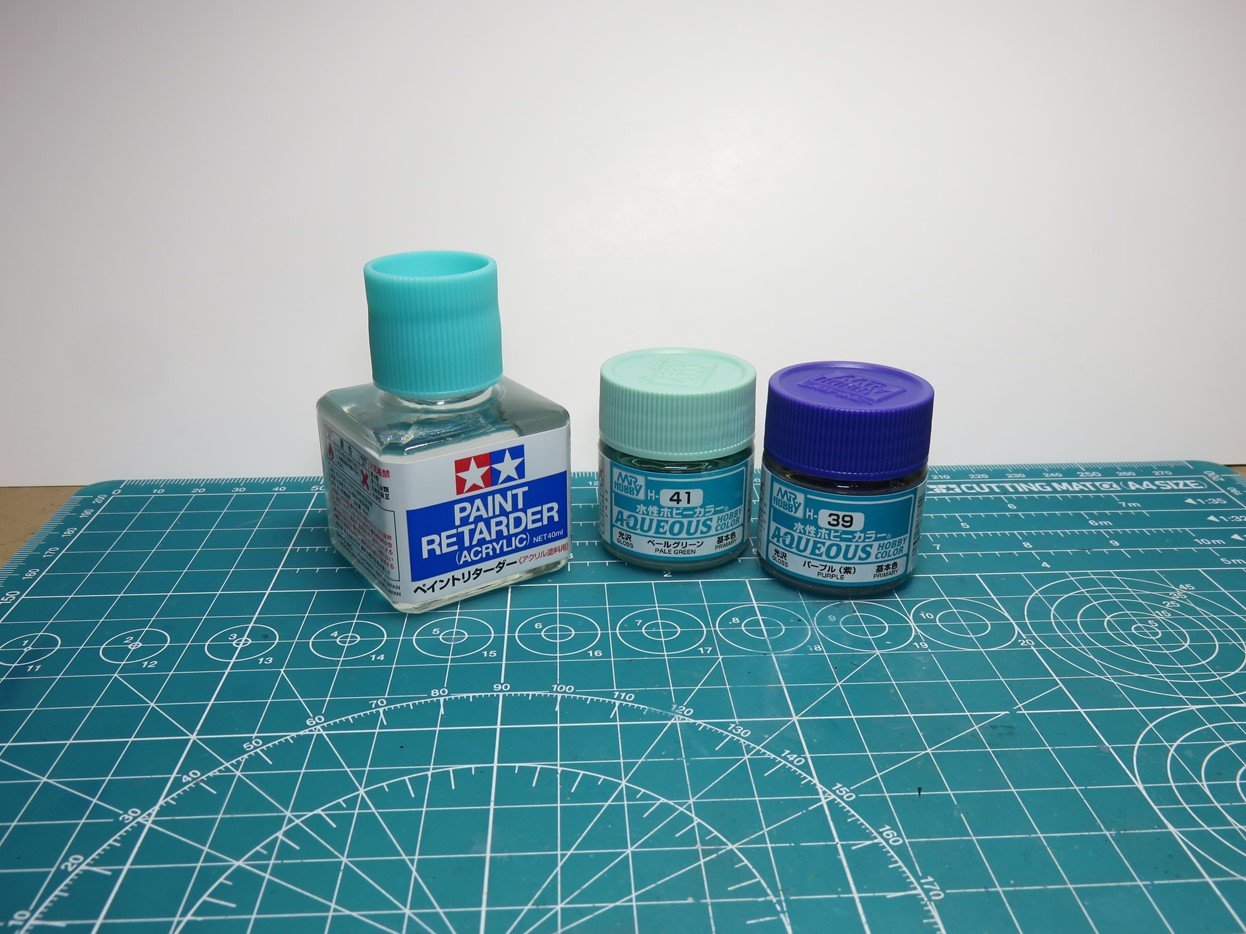
And the Acrylic Retarder works well with Mr. Hobby Aqueous paints.
Jared Demes is a modeler from southern Alberta. He has been building models since he was 4 years old when his Dad first introduced him to the hobby. He has written for several magazines including, Fine Scale Modeler, Scale Aircraft Modeling, Phoenix Scale Models, and others. He has an interest in all modeling subjects, with a focus on WWII Japanese aircraft and Science Fiction.
Jared has won several IPMS awards for his modeling, and currently operates his YouTube channel rebelsatcloudnine, where he showcases model builds and product demonstrations.
